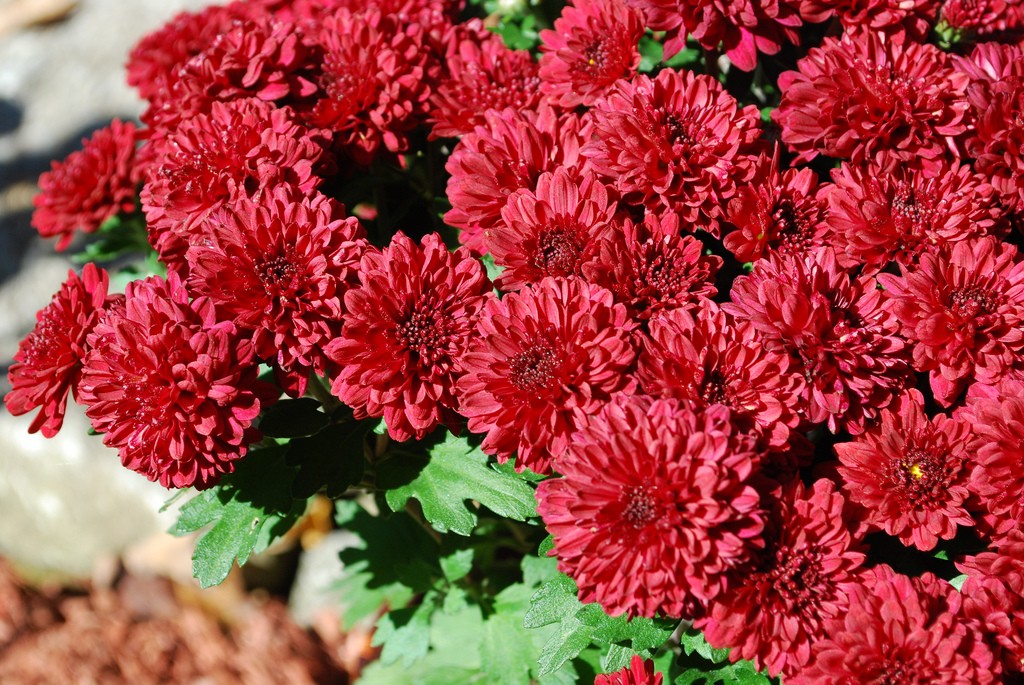I just read an article about how people waste money. There were a lot of things in the article like bottled water, expensive clothes and overdraft charges. Granted, those things sometimes are a waste of money, but so is buying mums every fall. Buy them once, and you should have enough to last a lifetime, plus some to share.
Buying mums at the beginning of the season is something we sometimes pass on. They aren’t blooming, and those pretty spring flowers like pansies, begonias and impatiens are beckoning us to take them home.
Now most gardeners who have been at it for some time will know this already, so if you fall into that category, this is just a friendly reminder or a nudge if you are a lazy gardener.
For younger gardeners, this is a tip that will save you a small fortune over the years.
If you are buying mums for the first time, you might wait until fall, or plant them now so that they will have time to spread.
After their first year, however, you should never have to buy more, unless you want different colors.
If you have established mums, now is the time to thin them out, making room for the overcrowded roots to stretch and multiply.
The rain we’ve been having lately has made the ground nice and soft, enabling you to pull them right up without even digging.
Now, take a small spade and make a little hole and pop each tiny plant right into it, covering up the roots and maybe pinching it back about halfway at the same time.
Just after a good rain is also a wonderful time to pinch back the tops of those leggy plants. Just pinch at a leaf node about halfway down the stalk, then make a hole with a pencil or a similar tool, now pop the little cutting into the hole, mound the soil up around it and make sure it has sufficient water while its roots are developing. This is a simple and very effective way to multiply your plants. Be sure your soil isn’t compacted, making it hard for new roots to form. A garden fork is a wonderful way to make sure that the soil in a small place is aerated enough for success with unrooted or small plants. If you are working in a larger space, use a garden tiller before planting.
Right before the next rain, after you have transplanted your mums, fertilize with Mum Booster, or your favorite all-purpose fertilizer. This will get them off to a good start.
For the rest of the month, and until the 4th of July, pinch the tops back. With our long summers and late fall, you can even go a little longer than that, but not much. They lose the ability to form blooms after about the middle of July.
In late spring and early summer, I pinch mine almost in half, thus helping them to remain upright when the blooms make them top-heavy in September and October. I stop pinching so much in mid-to-late June.
Keep fertilizing about once a month until the first part of September. Liquid fertilizer sprayed on the leaves works well, as does fish emulsion fertilizer. Be sure to read the instructions carefully.
Mums aren’t bothered by many pests, except maybe mealybugs, but sometimes they get a fungus caused by water resting on the leaves. Try not to water any of your plants in the late afternoon or at night after the humidity sets in. In the event that they do get a fungus or you see white cottony looking spots (mealybugs), spray with Ortho products labeled for fungus and insects. Most rose disease treatments will work for mums, too.
Give mums bright sunlight, water according to dry conditions; they will start to wilt when allowed to get too dry.
By transplanting your mums in this fashion, you can make 20 or 30 plants from one good-sized clump. Now that’s saving money!
Copyright 2017 Humble Roots, LLC. All Rights Reserved.
Image by ankakay






























